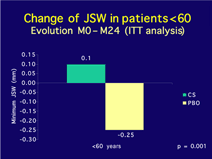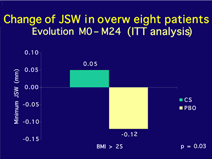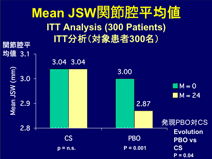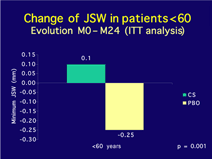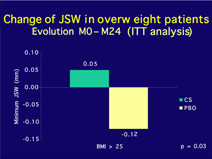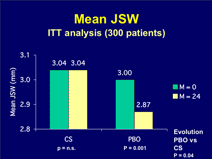INTERVIEW No.6
「Structure modifying effects of chondroitin sulphate in knee osteoarthritis/
膝関節炎においてコンドロイチン硫酸が組織変化におよぼす影響」

スイス チューリッヒ大学病院 物理療法医学研究所 リューマチ科 ディレクター
Beat A. Michel, MD・ビート・ミシェル
ミシェル教授は現在スイス・チューリッヒ大学病院物理療法医学研究所リューマチ科ディレクター。
スイス各地の病院にて内科、心臓科、物理療法科、リューマチ科にて研鑽をつむ。1987-1990年米国カリフォルニアのスタンフォード大学医学校医学部にて免疫学・リューマチ学科臨床研究シニアフェロー。研究専門分野は変形性関節症および血管炎。
1993年以来、リューマチ科長として臨床リューマチ科(外来および入院)、実験的リューマチ研究センター(代表Steffen Gay教授)、物理療法医学研究所に勤務。
Professor Michel is currently director of the Department of Rheumatology and the Institute of Physical Medicine at the University Hospital of Zurich, Switzerland.
He was trained in internal medicine, cardiology, physical medicine and rheumatology at various hospitals in Switzerland. Furthermore, he was a senior fellow in clinical research at the Division of Immunology and Rheumatology, Department of Medicine Stanford University School of Medicine, California, USA from 1987 − 1990. His main research focused on outcome in osteoarthritis and vasculitis.
Since 1993 he leads the Department of Rheumatology, which covers clinical rheumatology (out- and inpatients), the Centre of Experimental Rheumatology (head Professor Steffen Gay) as well as the Institute of Physical Medicine.
背景
天然軟骨成分であるコンドロイチン硫酸は膝の骨関節炎の痛みを緩和し、関節機能を改善させる効果があると従来から言われてきた。欧州リューマチ学会(European League Against Rheumatism (EULAR) )では膝関節炎治療に関する提言で、コンドロイチン硫酸が変形性関節症 ![]() 治療用遅効製薬(SYSADOA)として最高レベルの証拠を示しているとみなした。さらに限られた初歩的検証ではコンドロイチン硫酸を含む複数の薬品に疾病改善の効能があることが示された。しかし、この結果ついての正式な研究は行われてこなかった。本研究ではコンドロイチン硫酸に膝関節炎による軟骨減少を抑制する効果があるかを検討した。
治療用遅効製薬(SYSADOA)として最高レベルの証拠を示しているとみなした。さらに限られた初歩的検証ではコンドロイチン硫酸を含む複数の薬品に疾病改善の効能があることが示された。しかし、この結果ついての正式な研究は行われてこなかった。本研究ではコンドロイチン硫酸に膝関節炎による軟骨減少を抑制する効果があるかを検討した。
方法
外来クリニック、私立医院、および治験広告によって募集された300名の膝関節炎患者を対象に無作為プラセボ比較二重盲検臨床試験を実施した。治験患者は無作為抽出によって、800mgのコンドロイチン硫酸またはプラセボを毎日1回、2年間投与された。
治験の組み入れ規準は40〜85才で膝関節炎の臨床症状のある、ACR臨床・X線基準に照らして膝の骨関節炎と診断された患者とした。また治験参加時に最も症状が顕著な膝を臨床標的とした。除外規準はKellgren/Lawrenceスコアでグレード4とされる症例、またピロリン酸カルシウム沈着症など変形性関節症 ![]() の二次的原因がある場合、膝の外傷性病変、重度の併存疾患、関節手術の既往歴、過去1ヶ月の関節内薬物投与および治験期間中に大手術が予定されている場合とした。
の二次的原因がある場合、膝の外傷性病変、重度の併存疾患、関節手術の既往歴、過去1ヶ月の関節内薬物投与および治験期間中に大手術が予定されている場合とした。
主要評価項目は2年間での関節腔の減少とし、約20度に部分屈曲させた膝のX線正面像によって評価された。X線写真は1名の観察者によってブラインドで測定され、デジタルX線の検証自動解析が行われた。
救援鎮痛(rescue analgesia)のために被験者は500mgのアセトアミノフェン錠を1日最大3グラムまで服用することが許可された。非ステロイド系抗炎症薬(NSAID)は最大で連続5日間までの服用が認められた。治験期間中、ステロイド注射は禁じられた。
屈曲させた膝のX線写真が治験開始時と開始24ヶ月後に撮影された。WOMAC指標(Western Ontario McMaster Universities osteoarthritis)を含む質問票による患者評価を2年間の治験中、3ヶ月ごとに実施した。
統計的分析として、無作為抽出された患者全員、ならびに2年間の治験を終了した患者の治療の意図による分析(intenti-to-treat analysis)を行った。分析はベースライン来院時と最終来院時のデータの比較分析を行った。
結果
341名の患者を審査し、300名が治験に参加し、治療の意図による分析の対象となった。無作為抽出により、コンドロイチン硫酸(CS)またはプラセボを投与された。ベースラインでの特徴は2グループで同様であった。CSグループの患者の27%、プラセボグループ患者の27%が2年間の治療を完了せずに終えた。中止の理由には2グループに有意な差が見られなかった。コンプライアンス(服薬遵守)は同程度であった。
表1は関節腔の大きさ(最小値と平均値)の変化をCSグループとプラセボグループで比較している。
表1 2年間の関節腔変化(ITT 分析)
| コンドロイチン 4&6 硫酸(n=150) | プラセボ(n=150) | 差 | P† | |
|---|---|---|---|---|
| 関節腔の狭窄 | ||||
| 最小(mm) | 0.045±0.48 | -0.07±0.56 | 0.12 | 0.05 |
| 平均(mm) | 0.00±0.53 | -0.14±0.61 | 0.14 | 0.04 |
全患者数(n=300) *平均値±SD † Wilcoxon ランクテスト
プラセボを服用した患者グループでは関節腔の大きさが平均値 (-0.14mm)で有意な減少が見られるが、CSグループでは0mmであった。2グループでの関節腔減少の差は平均値 (0.14mm)、最小値(0.12mm)でp < 0.05で有意な差が認められた。
2年間の治験期間中、痛み、凝り、機能などWOMAC サブスケールの指標はCSグループで改善が見られた。しかしプラセボグループとの間に有意な差は認められなかった。
有害事象は軽微でCSグループとプラセボグループで同等の分布が見られた。
治験後に若年患者(60歳以下)および肥満患者 (BMI > 25 kg/m2)のサブグループ分析を行った。いずれのグループでもプラセボを投与されたグループではコンドロイチン硫酸を服用していた患者に比べて著しい関節腔の減少が2年間に見られた。平均的にみると、コンドロイチン硫酸を服用していた患者では2年間の軟骨の減少は見られなかった。これらの結果を図1と2 に示す。
図1
60才以上の患者における関節腔変化
発現M0-M24(ITT 分析)
図2
肥満患者におkる関節腔変化
発現M0-M24(ITT 分析)
図3
関節腔平均値
ITT分析(対象患者300名)
結論
今回の初の大規模無作為プラセボ比較二重盲検臨床試験で、2年間変化をX線分析したところ、コンドロイチン硫酸によって膝の変形性関節症による組織変化の進行が止まることがわかった。プラセボグループの患者は平均で1年で関節腔の平均値が平均で0.07mm減少したのに対してコンドロイチン硫酸を服用していた患者には減少が見られなかった。コンドロイチン硫酸は患者に安全で許容された。
コンドロイチン硫酸が変形性関節症 ![]() 軟骨に作用する仕組みは解明されていないが本試験の結果では、2年間のコンドロイチン硫酸による治療によって、変形性関節症
軟骨に作用する仕組みは解明されていないが本試験の結果では、2年間のコンドロイチン硫酸による治療によって、変形性関節症 ![]() に通常見られる組織変化の進行が止まることが示唆された。特に若年患者グループおよび肥満患者のグループで膝の変形性関節症治療にコンドロイチン硫酸の効果が確認された。
に通常見られる組織変化の進行が止まることが示唆された。特に若年患者グループおよび肥満患者のグループで膝の変形性関節症治療にコンドロイチン硫酸の効果が確認された。
以前の研究と異なり、今回の無作為臨床試験では症状緩和効果では有意な差は得られなかった。これは治療対象グループとプラセボグループのいずれの場合も試験開始時の症状値が低かったためと推定される。(例えば開始時の痛みの平均値は2.5〜2.7、全体では0 − 10であった。)
今回研究によって明らかになった組織変化効果が、関節形成、長期的な身体障害の縮小、投薬料の削減(reduced resource utilization)など臨床的に有意義な結果をもたらすためにも、今後引き続きの研究が望まれる。
Background
Chondroitin sulphate, a natural cartilage constituent, has long been suggested to be effective for reducing pain and improving function in osteoarthritis of the knee. In fact, in its recommendations for managing knee osteoarthritis the European League Against Rheumatism (EULAR) estimated the evidence for chondroitin sulphate as a symptomatic slow acting drug (SYSADOA) at the highest level of evidence Limited preliminary evidence also suggested that several drugs, including chondroitin sulphate, may have disease modifying properties. However, this has never been formally studied before. We therefore carried out a study to examine whether chondroitin sulphate is effective in inhibiting cartilage loss in knee osteoarthritis .
Methods
In this randomised, double-blind, placebo-controlled trial, 300 patients with knee osteoarthritis were recruited from an out-patient clinic, from private practises, and through advertisements. The study patients were randomly assigned to receive either 800 mg chondroitin sulphate or placebo once daily for 2 years.
Inclusion criteria were age 40 − 85 years with clinically symptomatic knee osteoarthritis diagnosed according to the ACR clinical and radiographic criteria for OA of the knee . The target knee was defined as the most symptomatic knee at study entry. Exclusion criteria were OA of grade 4 according to the Kellgren/Lawrence scoring system, the presence of any causes of secondary OA including calciumpyrophosphate deposition disease, traumatic knee lesions, severe co-morbidity, previous joint surgery, intraarticular medications in the past month, and the foreseeable prospect of major surgery during the study period.
The primary outcome was joint space loss over 2 years as assessed by a postero-anterior radiograph of the knee in partial flexion of about 20°. The radiographs were measured blindly by one observer with a validated automatic analysis of digitized x-rays.
For rescue analgesia, patients were allowed to take acetaminophen in 500mg tablets at a maximum dosage of 3g per day. NSAIDs were allowed for up to a maximum period of 5 consecutive days. No steroid injections were allowed during the study period.
Flexed knee radiographs were taken at entry and after 24 months. Questionnaires including the Western Ontario McMaster Universities osteoarthritis index (WOMAC ) were completed every 3 months over the two year study period.
For statistical analysis, both an intent-to-treat analysis, including all randomized patients as well as an analysis limited to those completing the two years of the study were performed. The analysis consisted of a comparison of data from the last visit with data from the baseline visit.
Results
Of 341 patients screened, 300 entered the study and were included in the intent-to-treat analyses. Patients were randomly assigned to receive either chondroitin sulphate or placebo. At baseline, patients of the two groups had similar characteristics. 27% in the CS-group as well as 27% in the placebo group did not complete the two year treatment course; there were no significant differences in the reason for withdrawal. Compliance was similar in both groups.
Table 1 shows the change of minimum and mean joints space widths over two years comparing the chondroitin sulphate and the placebo group.
table1 Joint space changes over two years (intent-to-treat analysis*)
| Chondroitin 4&6 sulphate (n=150) | Placebo (n=150) | Differencej | P† | |
|---|---|---|---|---|
| Joint space narrowing | ||||
| Minimum (mm) | 0.045±0.48 | -0.07±0.56 | 0.12 | 0.05 |
| Mean (mm) | 0.00±0.53 | -0.14±0.61 | 0.14 | 0.04 |
All patients(n=300) *Mean values + SD † Wilcoxon’s rank test
Patients receiving placebo experienced significant reductions in the mean joint space width (-0.14mm), while in the CS-group the loss of joint space was 0 mm. The difference in loss between the two groups was significant for the mean joint space width (0.14mm) and for the minimum joint space width (0.12mm), both results at p < 0.05.
Over the two year study period in the CS group all WOMAC subscales including pain, stiffness, and function yielded improvement; however, there were no statistically significant differences between the CS and the placebo group.
Adverse events were minor and distributed equally between CS and placebo groups.
Postdoc analyses, were carried out in the subgroup with younger patients (< 60 years) as well as overweight patients (BMI > 25 kg/m2). In both subgroups, patients taking placebo lost significantly more joint space width over the two year period than patients taking chondroitin sulphate. In fact, chondroitin sulphate patients did not lose any cartilage over the two year period on average. These results are shown in figure 1 and 2.
Figure1
Change of JSW in patients < 60
Evolution MO - M24 (ITT analysis)
Figure2
Change of JSW in over eight patients
Evolution MO - M24 (ITT analysis)
Figure3
Mean JSW
ITT analysis (300 patients)
Summary
In this first large scale randomized, double-blind, placebo controlled study, chondroitin sulphate halted structural changes in OA of the knee as assessed by radiographic analysis over 2 years. While patients in the placebo group lost on average 0.07 mm of the mean joint space width per year, patients taking chondroitin sulphate did not experience any loss. Chondroitin sulphate was safe and well tolerated.
Although the precise mechanisms of action of chondroitin sulphate on osteoarthritic cartilage have not yet been fully elucidated, the results of this study suggest that treatment with chondroitin sulphate over two years may stop the structural progression naturally observed in osteoarthritis. The found effects of chondroitin sulphate in the groups of younger patients as well as in overweight patients are especially reassuring for the treatment of knee OA in these patient populations.
In contrast to earlier studies, no significant symptomatic effect was found in this randomized controlled study. This may probably be explained by the rather low entry value of symptoms in both treatment and placebo groups (for instance, average pain was only 2.5 to 2.7 at entry while a full range of pain would cover 0 - 10).
Future studies are needed to determine how the structure modifying effect found in this study would translate into clinically relevant gains in outcome such as arthroplasty, decreased longterm disability or reduced resource utilisation.
Copyright (C) ZERIA Pharmaceutical Co.,Ltd. All Rights Reserved.








